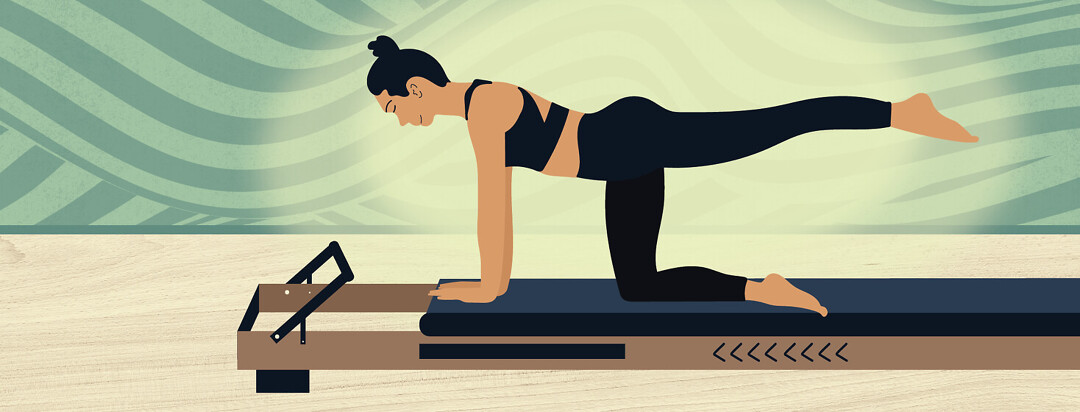Pilates Reformer Exercise as RLS Treatment
I was having a hard time finding exercise that didn’t make me cry. I have a congenital hip defect and very tight fascia which causes me near chronic mild to moderate pain in my butt (and hip). High-impact exercise hurts. Barre classes made my fascia issues worse. I was horrific at yoga and found it painful to lie on my back or side for a lot of the poses. Ditto for floor Pilates.
I don’t know what compelled me to try a Pilates reformer class. The tiny studio caught my attention one day, hidden in between an accountant and a consignment shop a little off the main drag of downtown. I signed up for a trial class.
What is this contraption?
The teacher showed me the ins and outs of using the reformer, an intimidating machine with interchangeable arm and leg straps, and a foot bar with a “bed” in the middle where you spend most of class lying on your back. I was nervous. There were spring loads and height adjustments. It was a lot.
My first Pilates reformer class
As the class started, I got a few pointers on my form from the teacher and tried my best on foot presses. My hips popped with each push, but they didn’t feel bad. Standing squats and ballet-style piles caused me issues, but exercising my legs while lying on the padded bed didn’t hurt. It felt good.
The arm exercises were a piece of cake and the finale of each class, the “hip ROM,” which I just this moment learned means range of motion, meant putting foot straps on and moving my legs in different configurations including big circles. I was scared I’d set off a painful spasm, but nothing bad happened. In fact, I felt great.
Feeling pain-free
I used to joke that all my problems would be solved if I could find a gentle version of the rack medieval torture device. I’d just found it.
The hip movements opened up my hip flexors and I walked out of the class feeling taller, not sore, and, best of all, pain-free. I started taking regular classes. They were expensive, but less so than physical therapy co-pays.
My restless legs were not acting up
One night, I was sitting on the couch, watching TV, when it occurred to me: my restless legs weren’t acting up. Usually, as the night drags on, my restless legs start to wiggle as I approach bedtime, signaling me it’s time to head to my bed. Tonight, though, they were quiet. They were satiated.
I went to bed anyway, as it was time. My usual restless legs didn’t act up that night in bed either. I didn’t wake up with hip pain, restlessness, or aches and pains. It was such an incredible relief.
Making Pilates part of my routine
My restless legs aren’t gone forever. One Pilates class isn’t quite enough to banish them, but taking regular classes helps them quiet down. The classes, or at least the ones I take, are very low impact and not cardio, so they’re not for everyone and I need to find something that works for my body that also gets my heart rate higher.
I’m immensely thankful I found the little Pilates studio downtown and that the patient teachers showed me how to access this exercise. It looked scary but it greatly improved my quality of life.
Have you tried Pilates? Did it help your restless legs syndrome? Share your experience in the comments below.
Interested in reading more about lifestyle changes for symptom relief? Explore our featured collection on lifestyle changes and alternative treatments for RLS.

Join the conversation